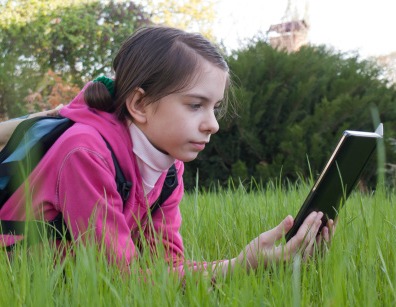While ownership of digital reading devices nearly doubled among adults after the holidays, a similar phenomenon has occurred among teens, according to school librarians, who see the trend as a unique opportunity.
The number of adults who own a tablet computer or ebook reader surged from 10 percent to 19 percent between mid-December 211 and early January 2012, according to a study from the Pew Internet & American Life Project. Likewise, school librarians have observed that more students had acquired digital reading devices over the winter break, too—providing an opportunity for lessons on ebook borrowing, not to mention piracy.
“One student asked me to upload an ePub file on her new tablet, so I saw she had way too many files on there, and no way were they all legal,” says Wendy Stephens, a school librarian at Buckhorn High School in New Market, AL. “I’ve talked with students about how digital property issues are the same as physical property. But I’m definitely going to incorporate some digital citizenship around technology with teachers and with students.”
At Chambersburg (PA) Area Senior High School, Melissa Engel-Unruh saw ereaders—which were received as gifts during the holiday season—spur new interest in the public library. So Engel-Unruh, the school’s librarian, recently invited the local branch librarian to talk with an AP Spanish class about resources at the public library, including ebooks. Afterward, every student walked out with a library card—more than half had never had one before
“Shocker!” says Engel-Unruh, by email. “I think some of them are going to investigate borrowing an ebook.”
Of course, as ownership of ereaders grows among the K–12 set, so, too, does demand for content.
At school libraries, many digital collections are primarily stocked with nonfiction materials, which students can often access from their personal devices to help with schoolwork. Such is the case at New Canaan (CT) High School, where librarian Michelle Luhtala offers her students access to nonfiction ebooks after hours, allowing students to check them out for an hour at a time, so they use them for research. But when it comes to fiction, the library department chair still encourages kids to use print materials, preferring to have face-to-face time with students about their selections.
Luhtala, too, says there was a notable uptick in the number of reading devices she saw at after the winter break. This was accompanied by a growing interest among students and teachers in borrowing ebooks, novels, in particular.
This leaves Luhtala hopeful. “We have an excellent relationship with the town library that has an excellent collection for recreational reading,” she says. “We just have to make sure we have the right combination of books for students and avoid redundancy. We don’t want to reinvent the wheel.”


